Nest reveals alarm system and smart doorbell
- Published
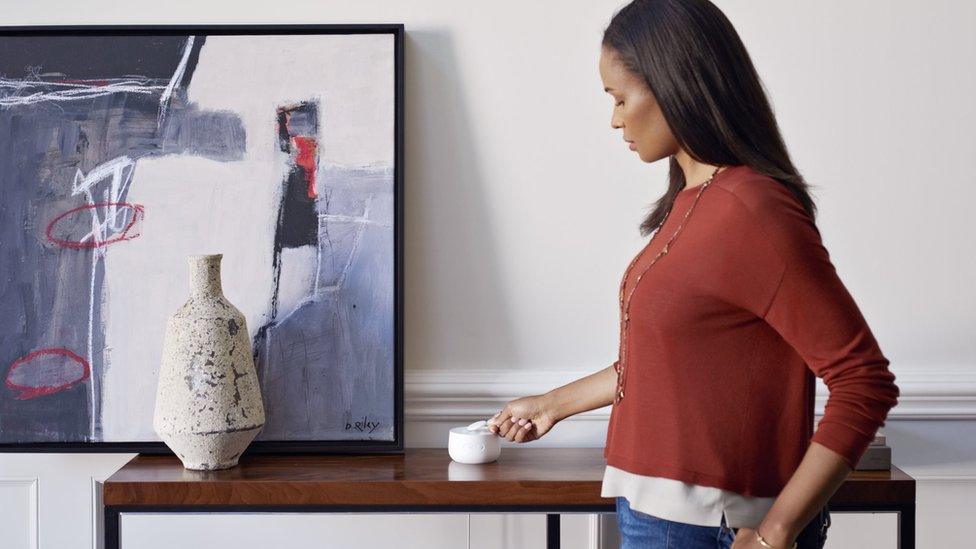
Nest's home security system is more expensive than several rivals
Nest is expanding its range of smart home products, ending a lull in which it improved existing kit, but did not expand into fresh categories.
The items include an internet-connected intruder alarm, a video-streaming doorbell and a door lock system developed in collaboration with Yale.
In addition, the firm - which is part of the Google empire - announced an outdoor version of its IQ facial recognition camera.
The tech is priced at a premium.
The Nest Secure alarm starter pack, for example, will cost $499 (£367) when it goes on sale in November.
Nest unveils new home technology
And if owners want to add a cellular back-up service to ensure it still works if the wi-fi connection goes down, there is an additional $50 per year charge.
By contrast, the Era Vault smartphone alarm system starts at about £150, Yale's SR-320 smart alarm kit can be bought for £250, and Samsung's SmartThings Home Monitoring kit begins at £140.
"Home security is an vital part of smart home market and is already a very competitive market segment comprising of established players as well as other smart device players," said Dinesh Kithany from the IHS Technology consultancy.
"Nest's current price tags put them in a premium position and could possibly restrict them from having a sizeable market, particularly outside the US."
Detect and tag
Nest is pitching its products as being easier-to-use than much of the competition and all controllable via a single app.
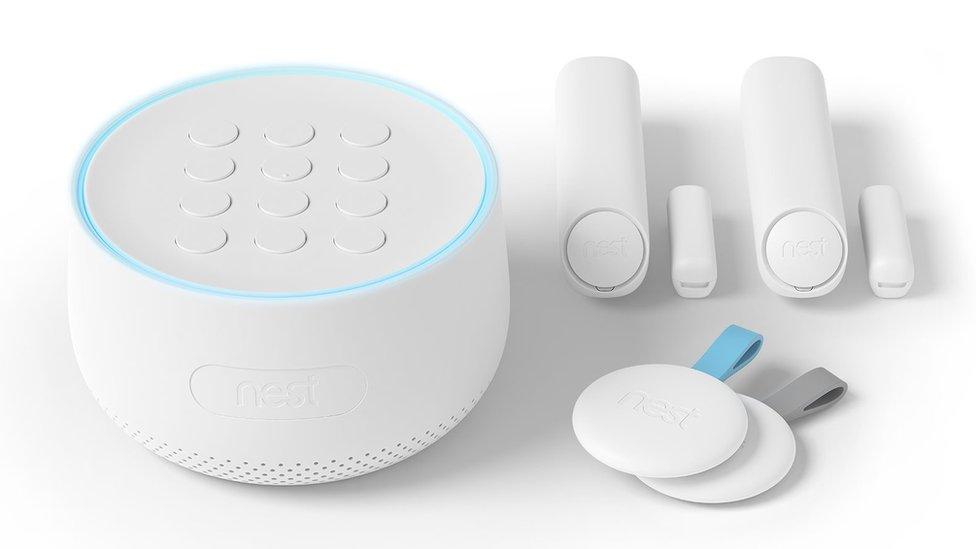
The Nest Secure system can be expanded with further products for an additional cost
The basic Secure system consists of three interlinked devices :
Detect - a sensor that recognises both nearby motion and the open-shut movement. It can be placed on a wall, door or window
Tag - a keyring fob that allows the system to be armed and disarmed by family members with a tap as they enter and leave their building
Guard - a base that sounds the alarm and can be turned on and off by either being tapped with a Tag or having a code typed into its keypad. It also contains its own motion sensor and, like the company's earlier smoke detector, guides its owners via voice recordings
Notifications are sent to the Nest app if the system detects anything unusual and allows the system to be turned on remotely if the owners forgot to do so when leaving.
The Hello video doorbell aims to rival similar products already on the market by providing high dynamic range (HDR) images - meaning they should be richer and more detailed than standard feeds when viewed on compatible equipment.
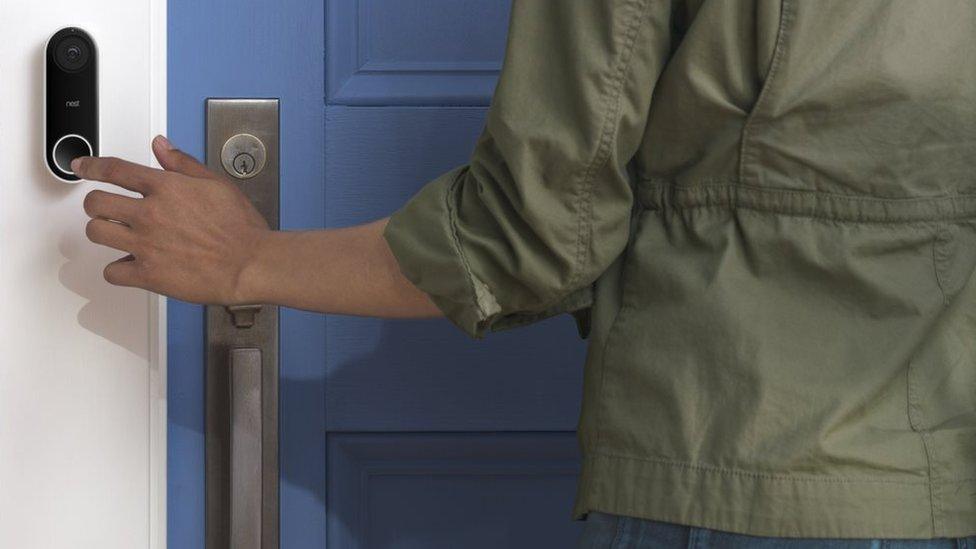
The Hello bell streams high definition audio and video and can be paired with facial recognition software
The device can be set to send alerts if it does not recognise a stranger's face or hears an unusual sound - however owners must subscribe to an additional service to gain the function.
If paired with the other forthcoming product, the Nest+Yale lock, owners will be able to unlock their front door remotely for friends or deliveries, assuming they are comfortable with the idea.
"The Nest Hello video doorbell brings a few unique features to an increasingly crowded market," remarked IHS Technology analyst Blake Kozak.
"[But] despite its brand recognition, Nest will have an uphill battle to supplant [smart doorbell] Ring, which currently has a global market share of about 45%."
Neither Nest's lock nor bell have yet been priced.

Analysis:
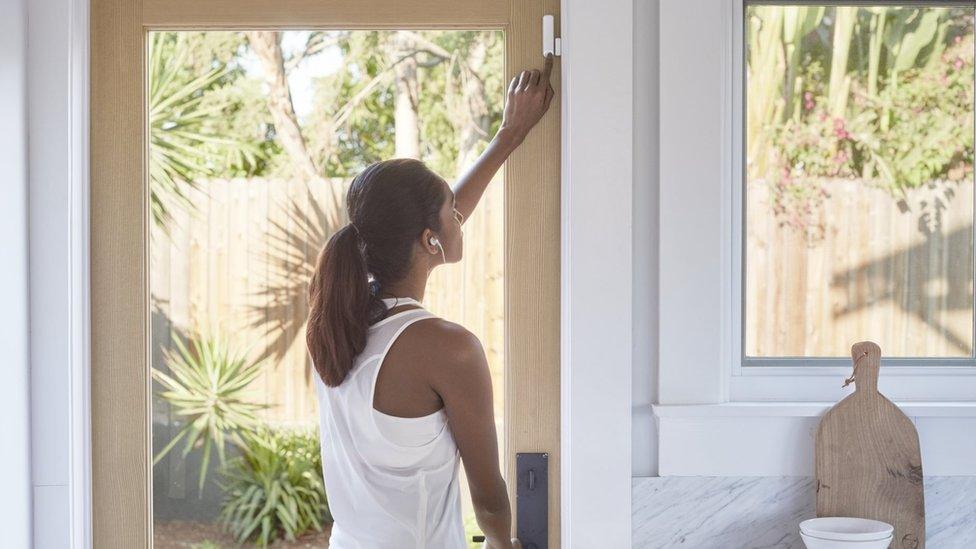
The Detect sensors can identify when a door or window is being opened
By Dave Lee, BBC North America technology reporter
Last year, Nest's co-founder Tony Fadell was forced out of his company - the primary criticism being that it wasn't putting out enough new products.
The same complaint can't be levied at the man who replaced him, Marwan Fawaz. At San Francisco's Contemporary Jewish Museum, we saw a slew of new ideas, all focused on the idea that home security products are atrociously hard to use.
Nest Secure, a complete home security system, is much more ambitious than previous Nest products. And if it's taking on the terrible home security industry, with its confusing number pads and unintuitive installation, it won't be difficult to pick off that low-hanging fruit.
In fact, I'd say Nest's biggest challenge with Secure will not be detecting bad guys, but eliminating the false positives that plague rival products.
Until I'm able to test it out properly, I'm going to withhold my judgement. But at first look, it seems Nest have put together a strong suite of new ideas that cater to - shock - normal people.
Take Nest Hello, the new smart doorbell. Its "nap time" mode allows you to still be notified when someone presses the bell, but it will not chime so as not to wake any sleeping babies (or adults, for that matter). That's good, simple design.
UPDATE: Tony Fadell's PR staff has been in touch to say Mr Fadell did not leave Nest because of a lack of new products - noting that "under Tony's leadership, Nest shipped 4 hardware products, launched 2 new services, and had 5 app releases".
However, reports published at the time of his departure cited a lack of new product lines - rather than upgrades to existing products - to be a key factor in his departure.

Google paid $3.2bn (£2.4bn) to buy Nest Labs in 2014 despite it only having two products - an internet-connected thermostat and smoke detector.
The expectation was that it would launch further smart home kit in short order.
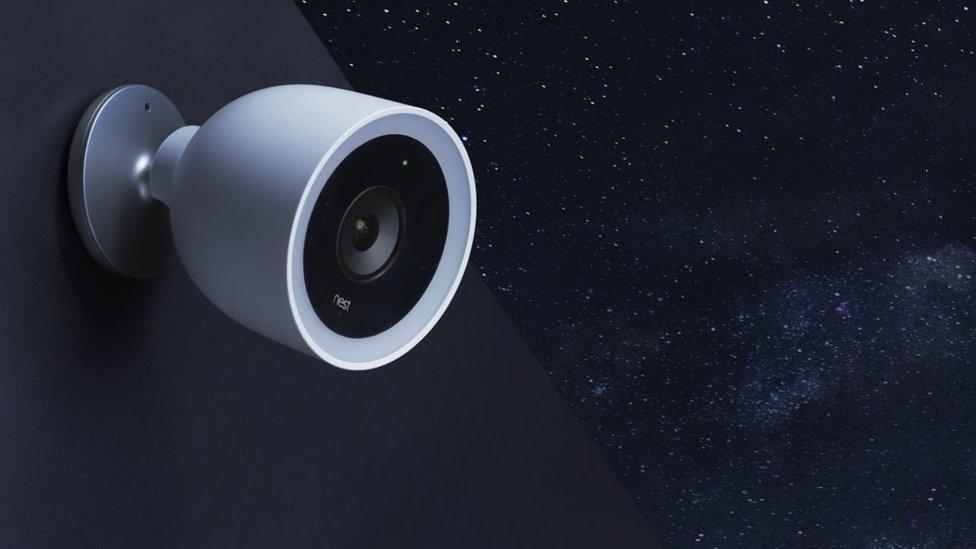
Nest also announced a $349 outdoor security camera that uses facial recognition tech
But, until now, the only new hardware category it had moved into had been security cameras, and they were only released after Nest acquired Dropcam, a start-up specialising in the field.
"This launch is essential for Nest and long overdue," commented Ben Wood from the CCS Insight consultancy.
"Google paid an eye-watering sum for the business and it then seemed to have been struck by some kind of paralysis.
"In the meantime, the market has slipped away from them as others have piled in.
"The products announced today will help close the gap, but they are far from the disruptive leap that Nest made when it first exploded on to the scene."
- Published4 June 2016
- Published8 April 2016